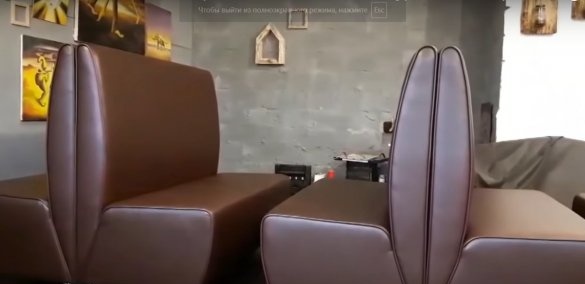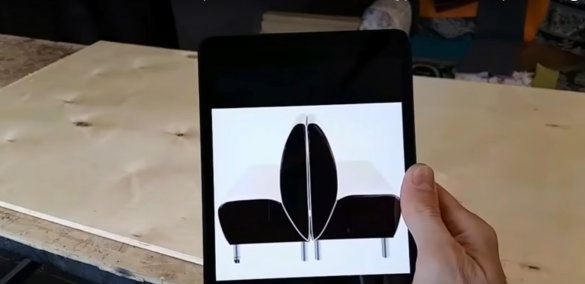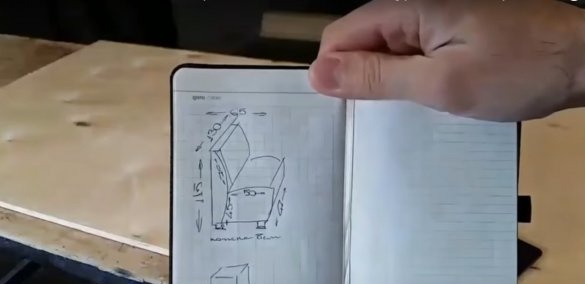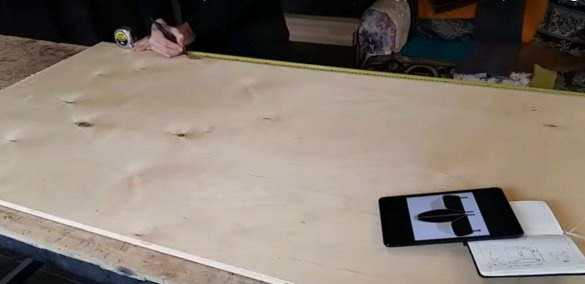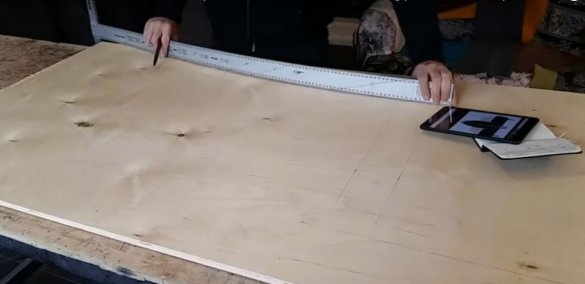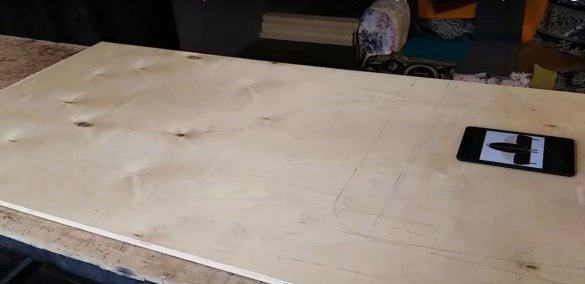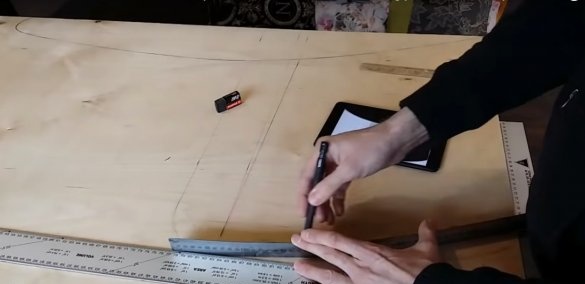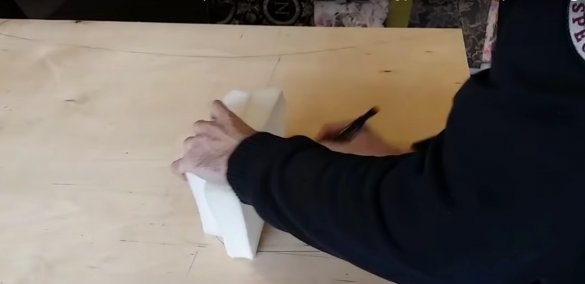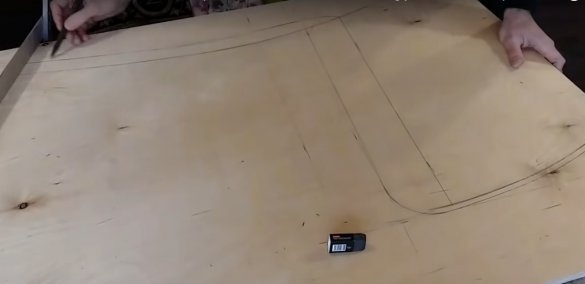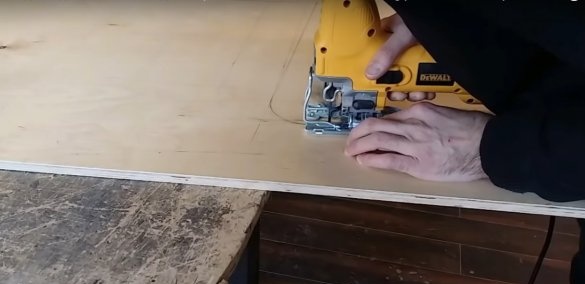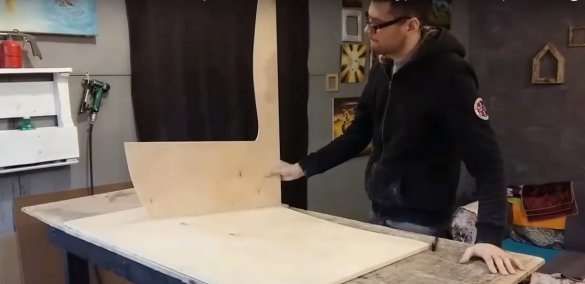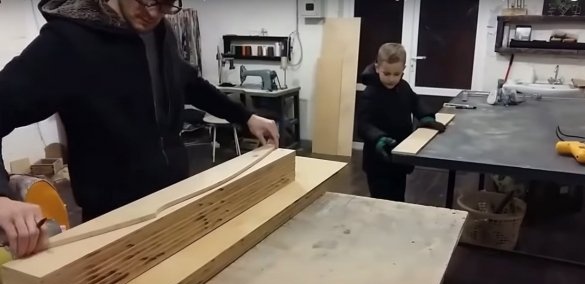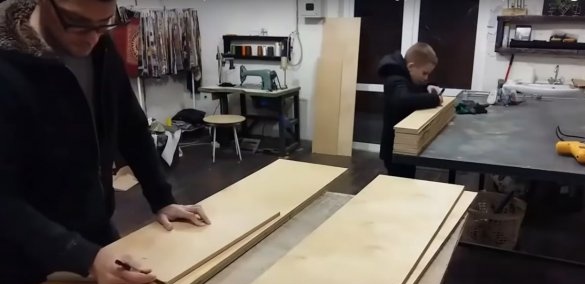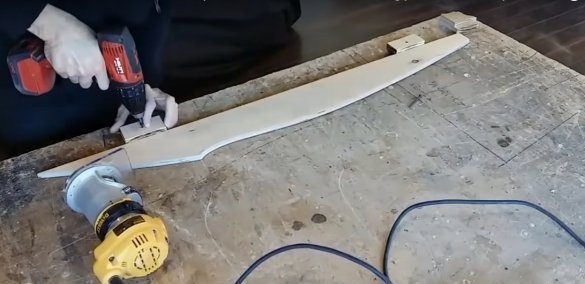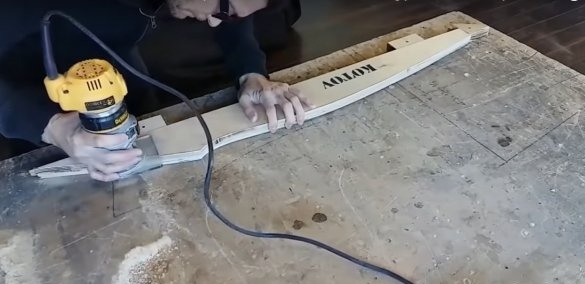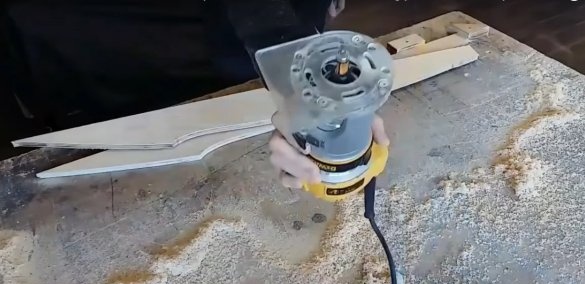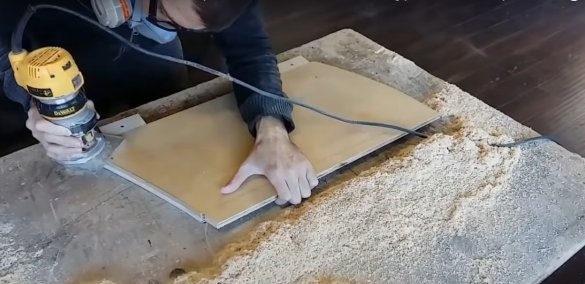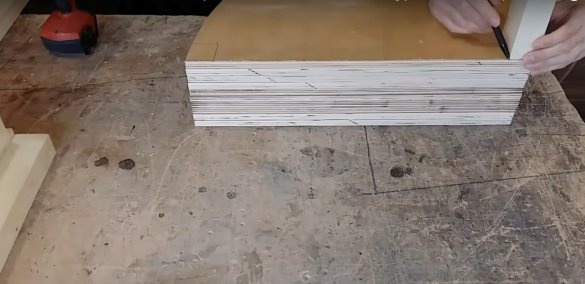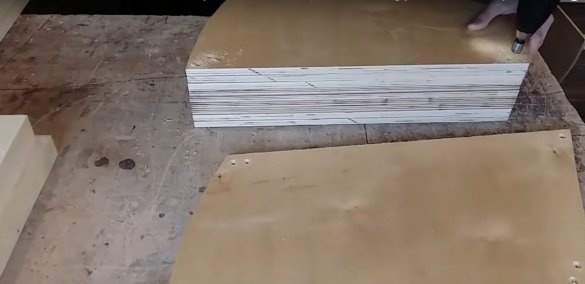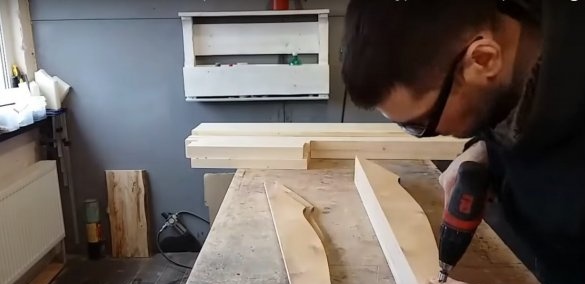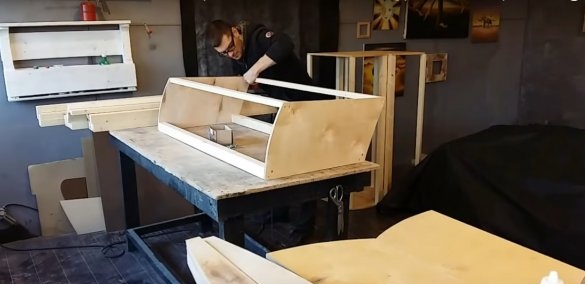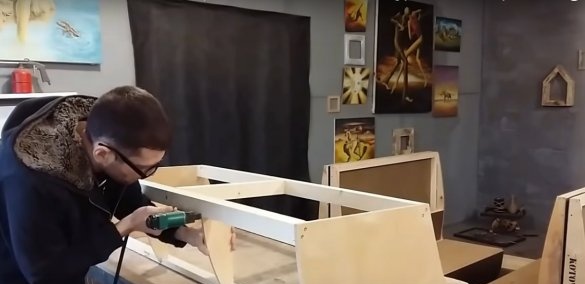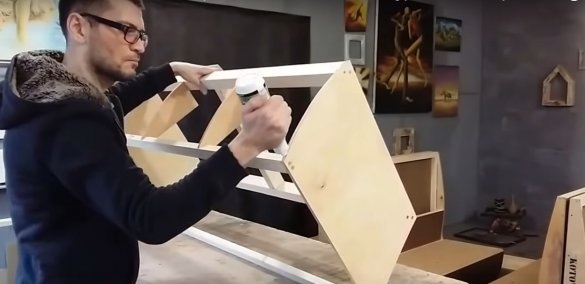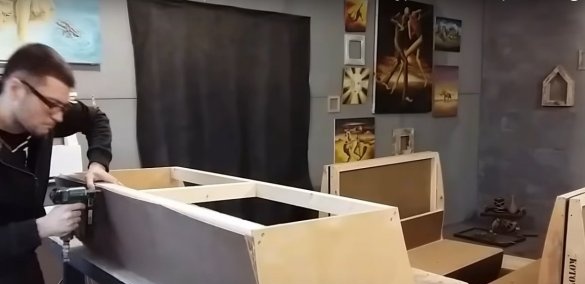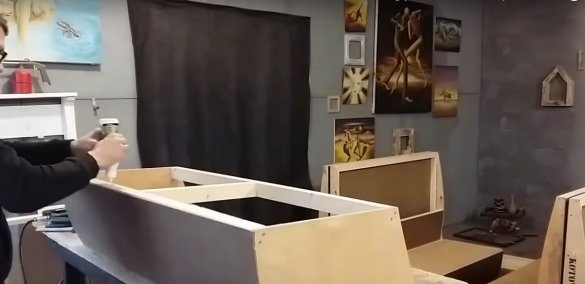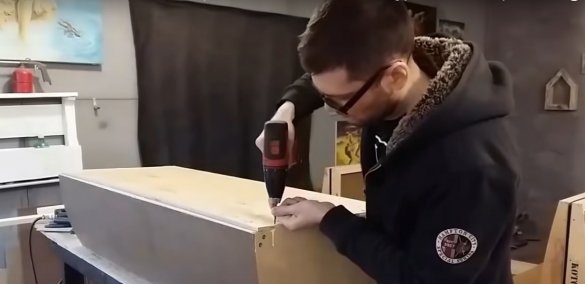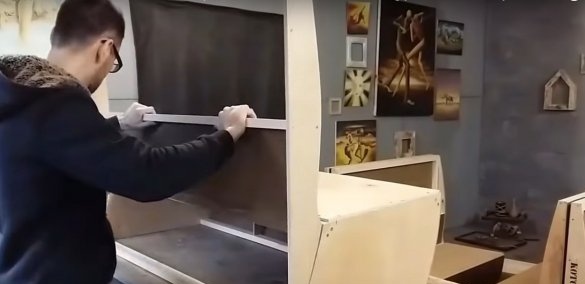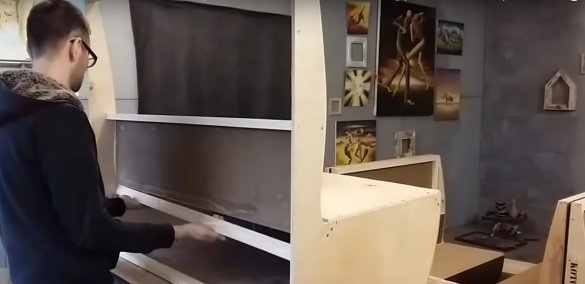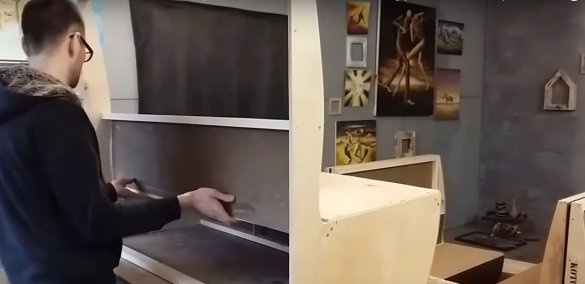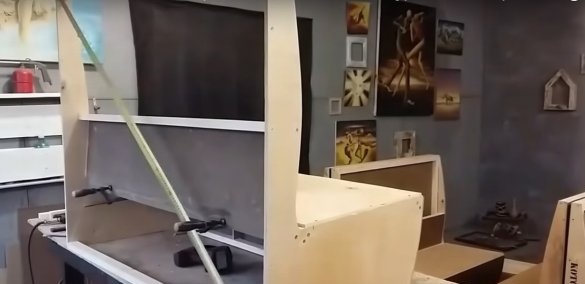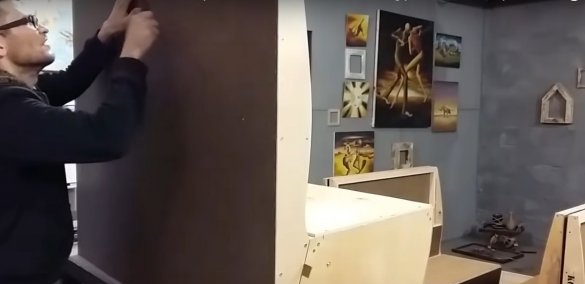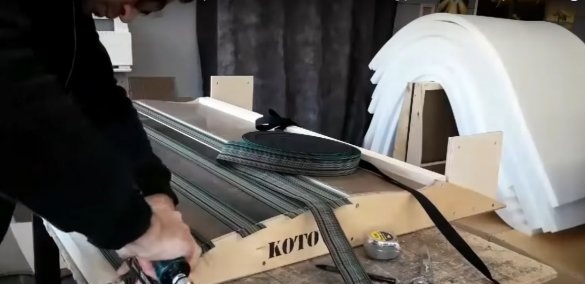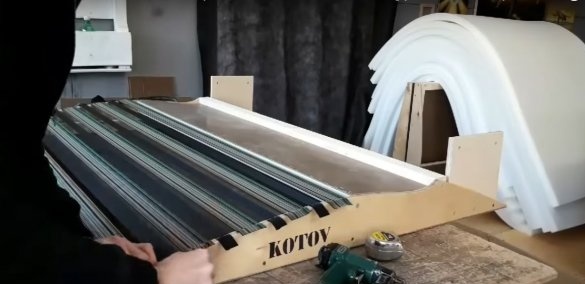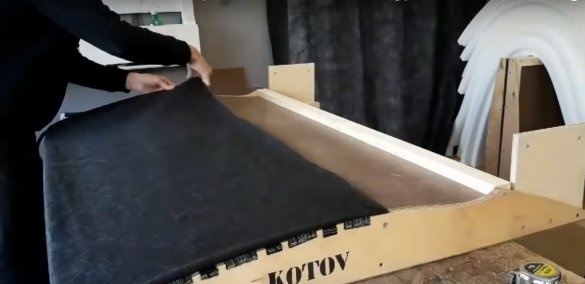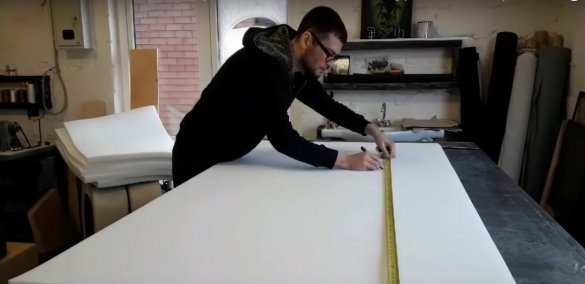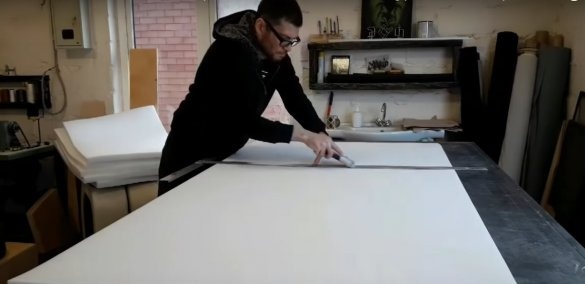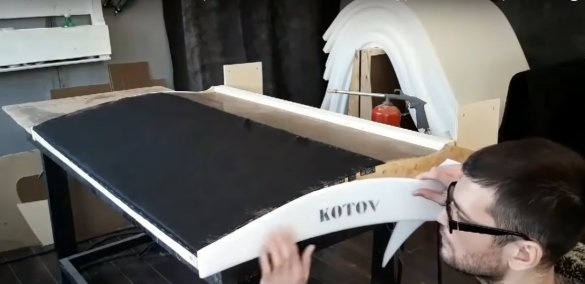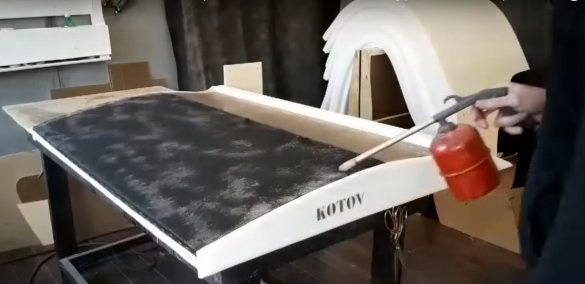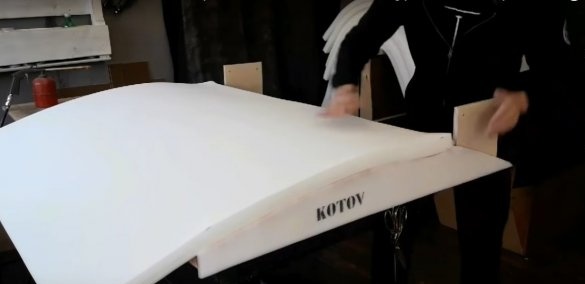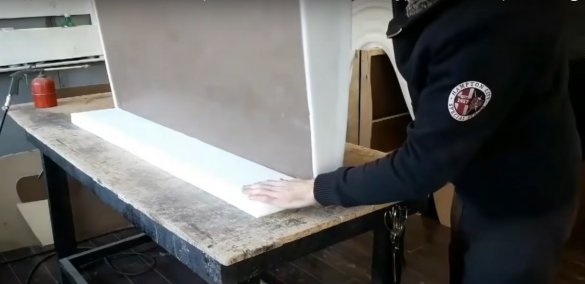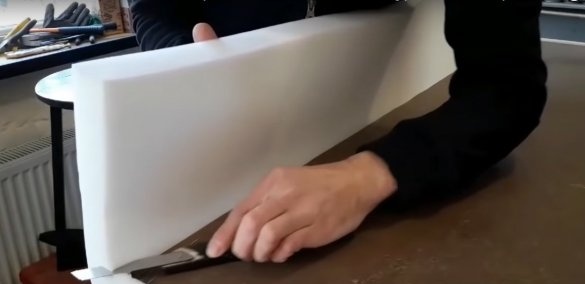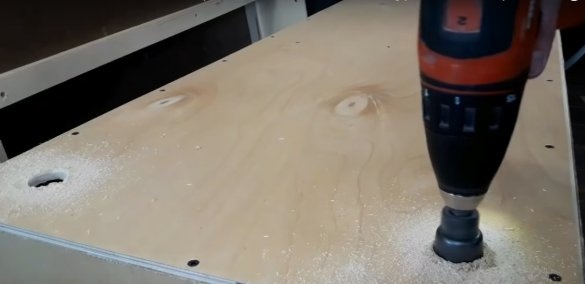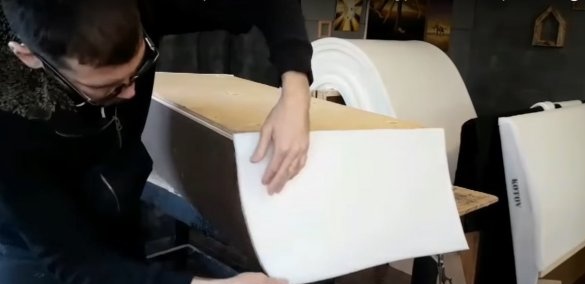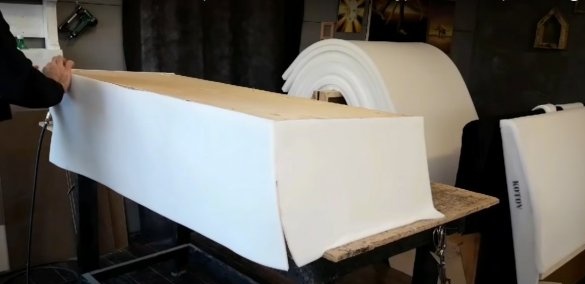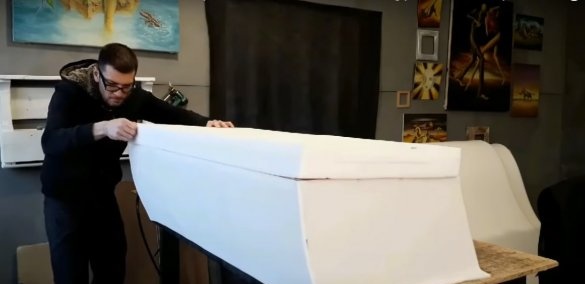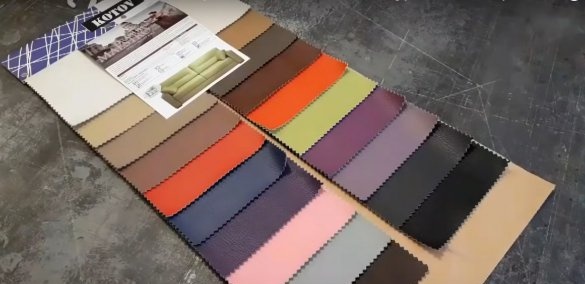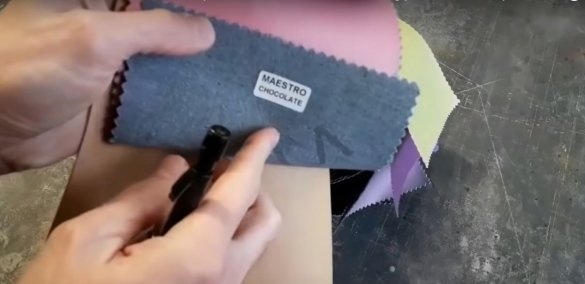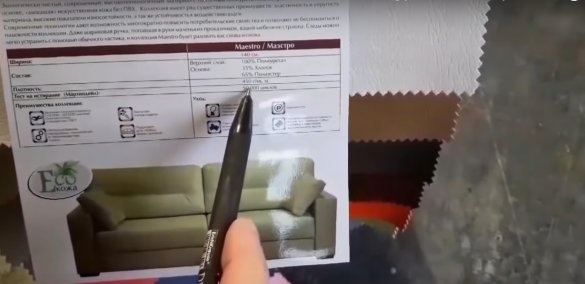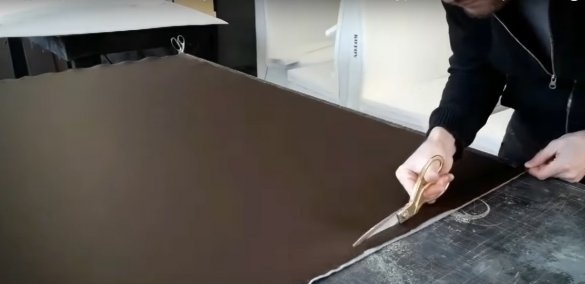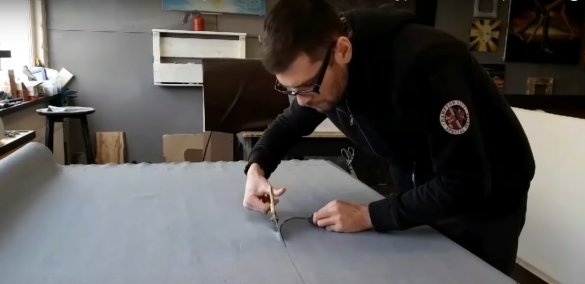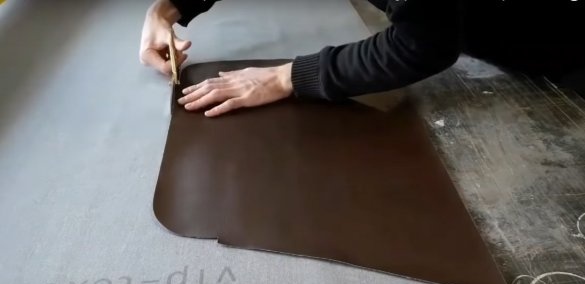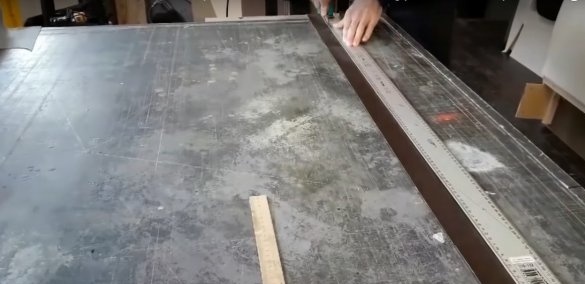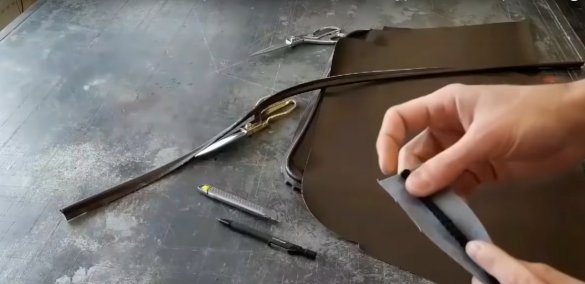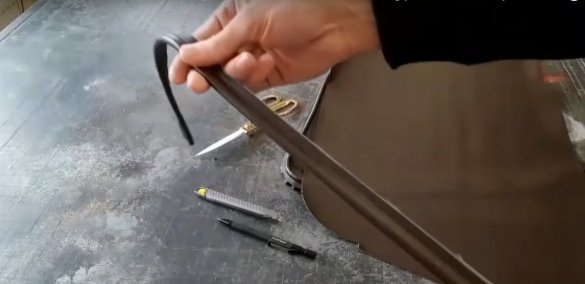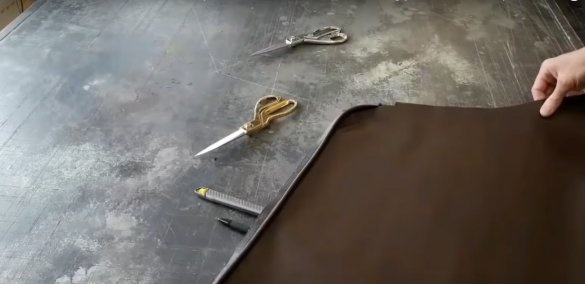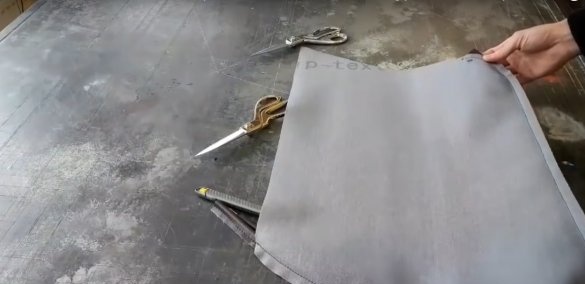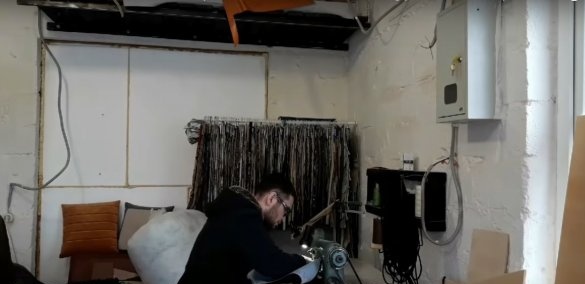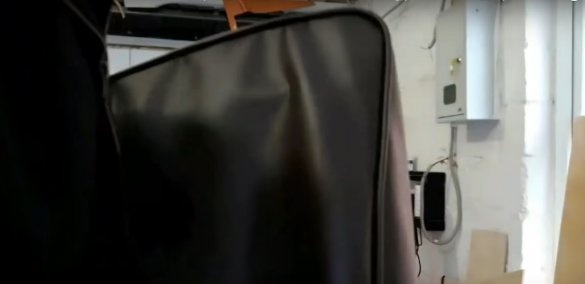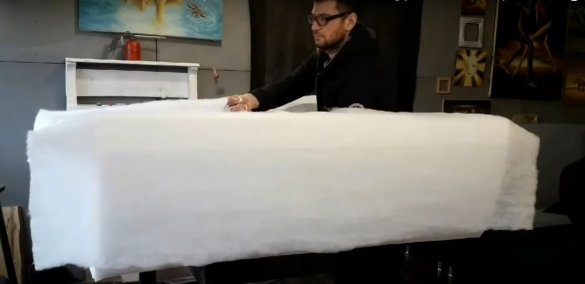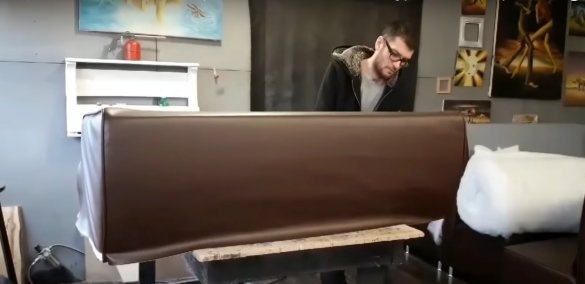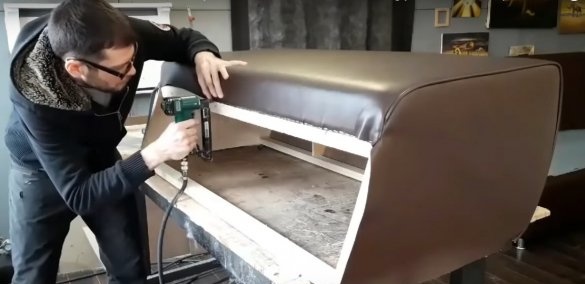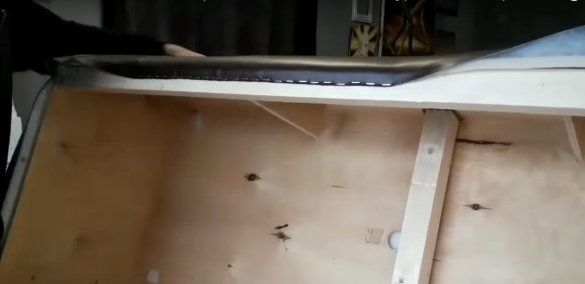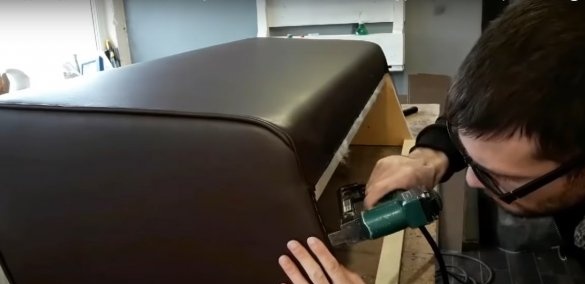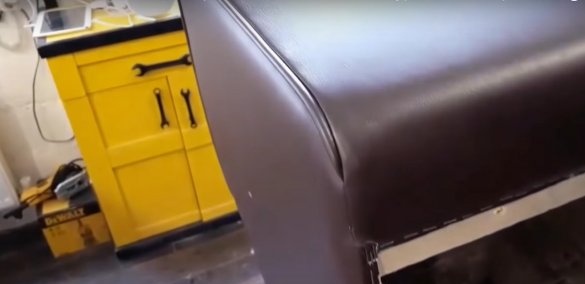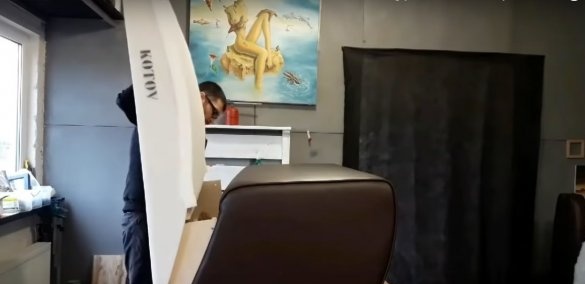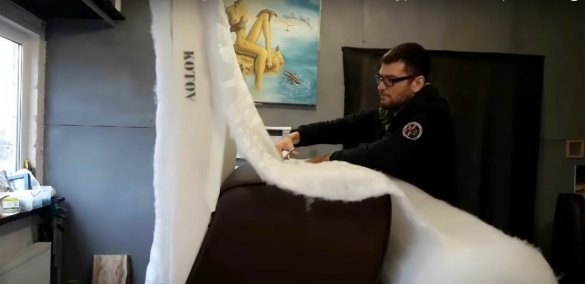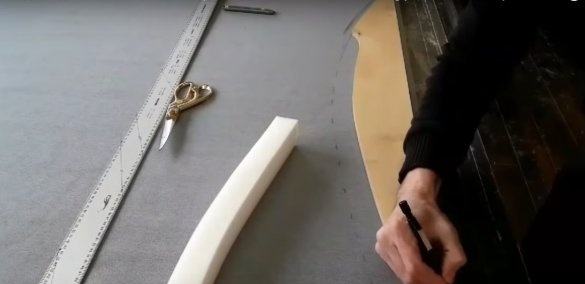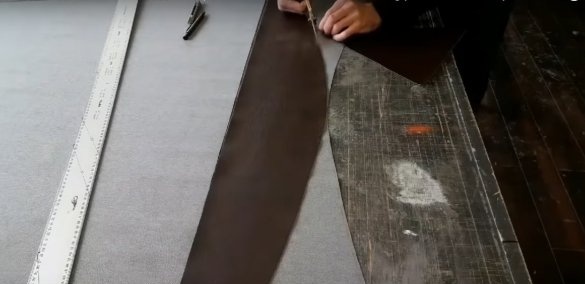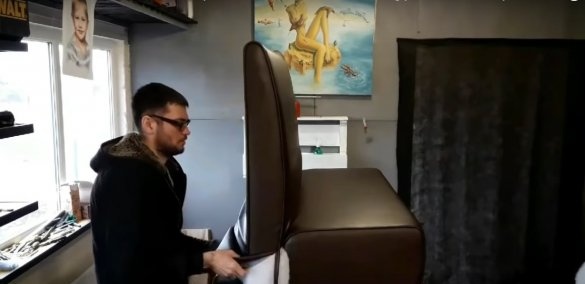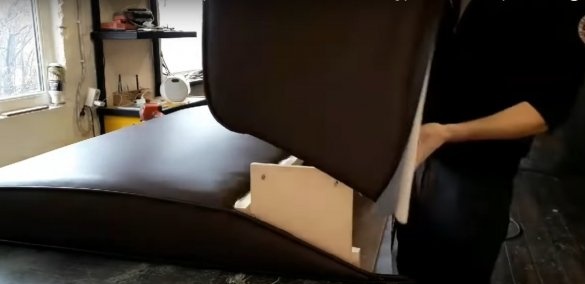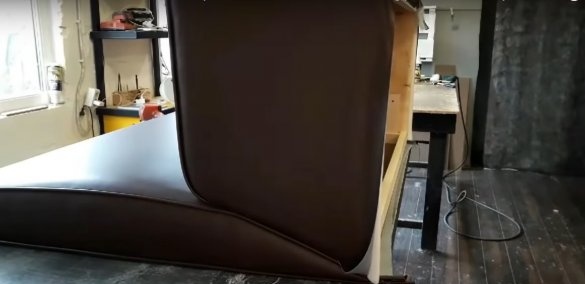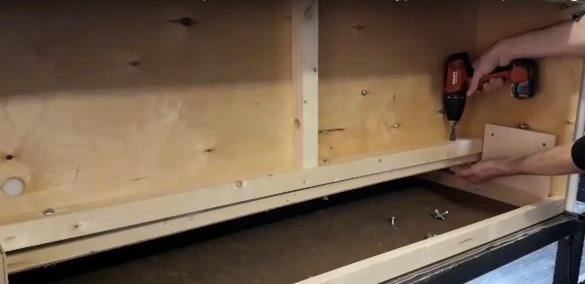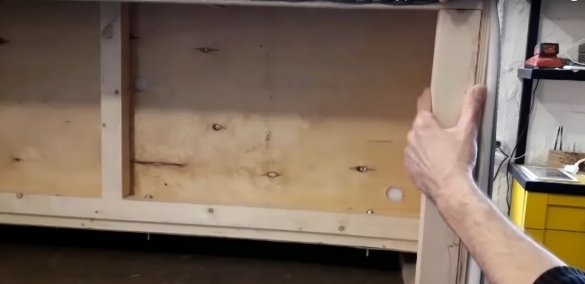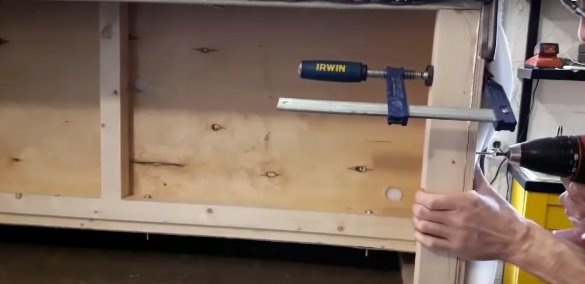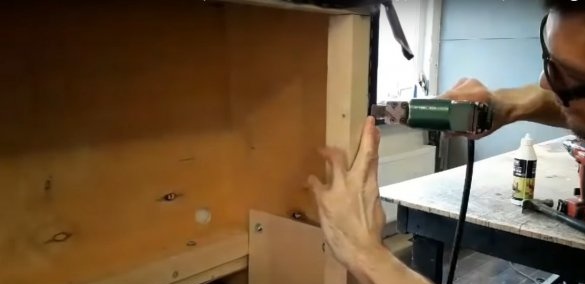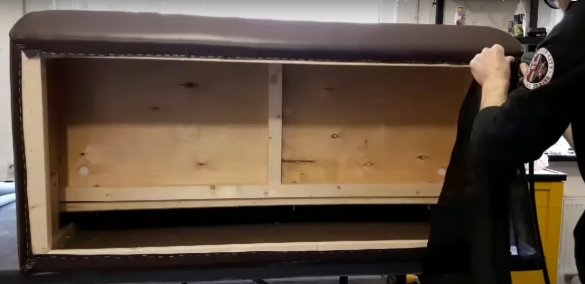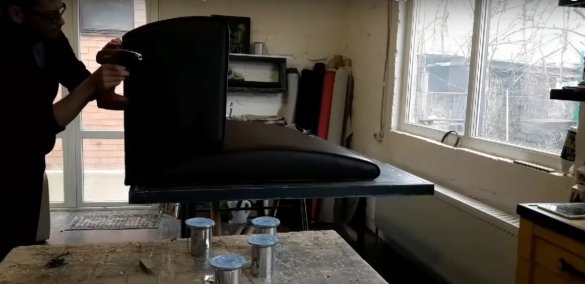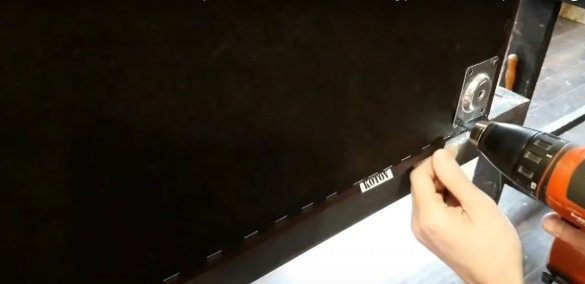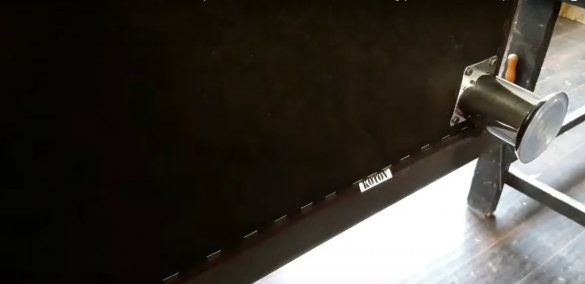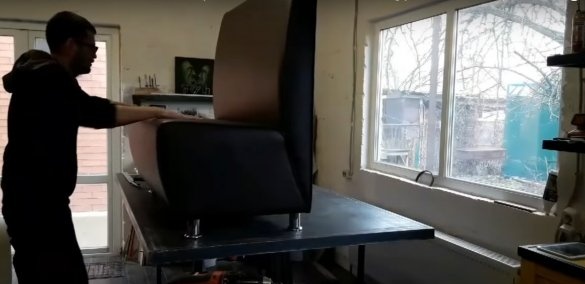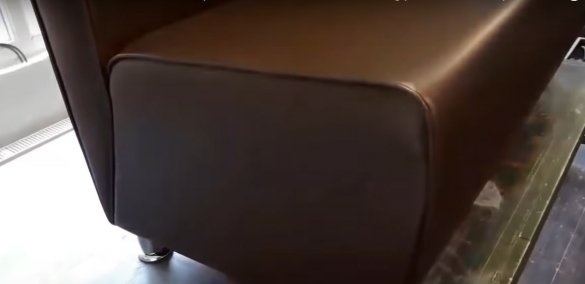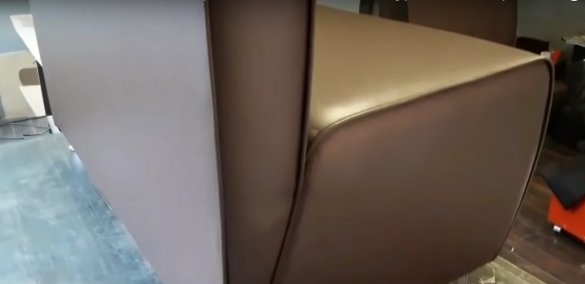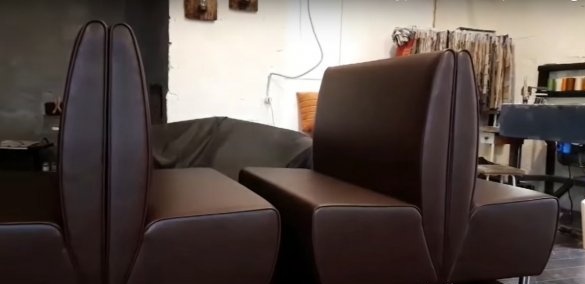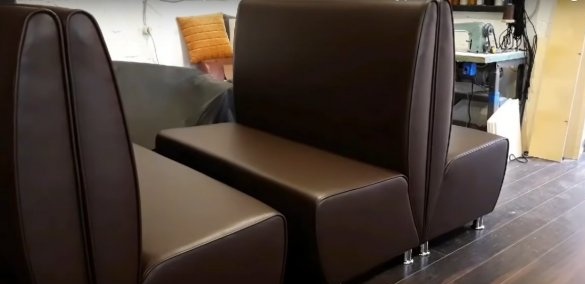Manufacture of furniture for cafes and restaurants - great business. For the time being - for the time being furniture production of such a scale may be in your home workshop and will not require additional investment in furniture workshop equipment.
A business like this horde is profitable primarily because cafes and restaurants make complex orders for a round sum. We are talking about tables, chairs, bar counters and, of course, sofas for visitors.
In order to make a sofa for a cafe do it yourself you will need:
Materials:
- plywood for the manufacture of a frame with a thickness of 10 - 12 mm;
- wooden slats for the manufacture of the frame;
- laminated fiberboard for casing;
- furniture belt (furniture textile tape);
- spanbond for sheathing the frame and processing the bottom of the sofa;
- durable leatherette with a density of at least 350 g per square. m;
- a furniture edging in tone of a covering or a synthetic cord and a leatherette strip for its manufacture;
- furniture foam 50 mm thick;
- furniture foam 10 - 15 mm thick for facing the frame;
- synthetic winterizer;
- non-combustible glue for gluing foam rubber and sintepon;
- joiner's glue;
- finished metal legs and mounts to them;
- furniture screws, bolts, furniture driving nuts;
- metal staples for a stapler.
Instruments:
- stationary or manual circular;
- grinder;
- drill;
- screwdriver;
- jigsaw for cutting curly parts;
- Miter saw;
- manual mill and straight cylindrical mill for processing the edges of plywood parts;
- furniture pneumatic stapler;
- spray gun for glue;
- clamps;
- a sharp knife for cutting foam rubber and leatherette;
- scissors;
- industrial type sewing machine with walking foot;
- construction tape measure, square, long flexible ruler;
- marker.
Manufacturing process
Step one: development of drawings and manufacturing of parts
Often, the customer does not imagine what he wants to order, so you should be well versed in the style, functionality and design features of furniture for cafes and restaurants. Typically, the master has a set of template models, which he adapts to the size of the customer.
The frame of the sofa is made of household plywood 10 - 12 mm thick and wooden battens. To draw smooth lines of the design, the author uses a flexible long ruler.At first, when marking parts, a tailor's pattern and a regular compass will also help you.
On the plywood sheet, the author draws the profile of the sofa and subtracts the allowance for the lining of the frame with foam rubber. Thus, he will receive the necessary dimensions of the frame parts.
The edge of the blanks cut according to the templates must be processed with a manual milling cutter. To do this, the author uses a straight cutter. Workpieces are processed in pairs, where the workpiece is the part on top. The lower part serves as a limiter and leads the cutter along the desired path.
Step Two: Assembling Frame Elements
The frame of the sofa consists of two elements - the seat and back. Start the assembly by marking up the connections. Drill holes for the screws. Assemble the seat frame as shown in the photo. Be sure to use glue to strengthen the joints. Install also curly spacers under the fiberboard trim.
According to the same principle, assemble the back of the sofa, which consists of side parts of a curved shape and several horizontal jumpers.
Step Three: Covering Frame Elements
The backrest and carcass are made of laminated fiberboard. Also, on the front plane of the back, the author partially uses a furniture belt. This will make the sofa much more comfortable.
As an exception, sitting on top is lined with plywood. If desired, you can also install a furniture belt with a checkerboard weave, however, due to the active use of plywood, plywood is a better choice.
Fasten the fiberboard sheet to the front of the seat. Use staples, glue and a furniture stapler.
Temporarily mount the backrest to the seats using a block and a pair of clamps. Later, the frame will be further strengthened with wooden battens, however at this stage you need to take care of the correct backrest geometry. Check the diagonals and secure the fiberboard sheet to the back of the backrest. Also install the lower part of the casing in front.
Remove the backrest and proceed to fix the casing from the furniture belt. The strips are mounted horizontally and fixed with metal brackets. Cover this plane with a layer of spunbond with a density of at least 120 g per square meter. m. The sheet is attached with brackets to the hem.
Step Four: Foam back and seat lining
Glue back profile with thin foam. Apply glue to the plane of the back and glue a foam rubber with a thickness of 50 mm with a lap on the top of the back. Cut the excess length.
On the back of the seat, drill a few round holes for air circulation. Glue the perimeter of the seat with thin foam rubber, and on top stick 50 mm thick foam rubber - in 1 or 2 layers.
Step Five: Making Back and Seat Covers
For the manufacture of casing, the author uses furniture leatherette with a density of 450 g per 1 sq. M. To cut profile cover elements that have irregular curved shapes, place the frame on a leatherette section and circle around the contour.
When creating the sheathing, the author uses a furniture edging. It can be purchased separately in the load to the material for furniture trim, or can be made independently from a thick synthetic cord and leatherette strip. The edging adheres to the side parts of the cover, then its elements are sewn together.
A layer of synthetic winterizer should be glued onto the plane of the frame lined with foam rubber to smooth out irregularities and create additional volume. Also, the synthetic winterizer will help you get the necessary cover tension.
Using the same principle, prepare the back of the sofa. Here the author uses a thicker layer of syntepon.
Put the cover on the frame, straighten and fix with brackets on the back of the seat (back).
Step six: final assembly of the sofa
Install the backrest to the seat. Drill holes in the attachment points. To fix furniture bolts, the author uses clogged nuts.
Please note that there are plates on the side of the back frame that secure the back to the seat body.
To strengthen the structure, the author screwed an additional one bar on both sides of the base of the sofa.
Seventh step: processing the bottom of the sofa and installing the legs
The bottom of the sofa is hemmed with a spanbond. This is a durable non-woven material, which has an attractive cost and is popular among furniture makers. Choose a spunbond with a high density - at least 100 g per 1 sq. M.
Spanbond is attached with metal staples using a stapler in the hem. Therefore, cutting out a detail of the skin, make an allowance of a couple of centimeters around the perimeter.
Install the leg mounts using self-tapping screws. Fasten the legs. You can always buy legs in the online furniture furniture store.

